It’s no exaggeration to say that the Wooting 60HE changed the competitive gaming landscape. It wasn’t even Wooting’s first gaming keyboard with Hall Effect switches, but it was the first to explode into the mainstream and redefine what competitive gamers should expect when looking for the best gaming keyboard. The Wooting 80HE is its successor and launched into a whole different landscape. Magnetic switches (Hall Effect) on keyboards are common now and can be found affordably, and many of the 60HE’s most novel features have been copied and built upon; it’s enough to make you wonder if the Wooting 80HE would be able to find its place when so many new competitors have crowded the market.
I’ve spent more than a month with it to find out the answer to that question and, good news, while many of its features may not be unique anymore, it manages to impress enough that even 60HE owners should consider moving to the Wooting 80HE.
The Wooting 80HE is an 80% keyboard, but it’s probably not exactly what you’re thinking of. When companies use that term, most often they mean that the keyboard is tenkeyless: a full-size keyboard with the number pad chopped off. But that’s not the case here. Wooting went with a more unique layout, squeezing everything closer together, and condensing the navigation and editing section down to two columns and adding a dedication mode switch button next to the function row.
It’s unconventional, but it works well. Unlike the 60HE, which was ultra-compact and far less functional as a daily driver because of it, the 80HE instantly felt right. Even with its different sections compressed together, it takes almost no time to adapt to. And because it has a function row, arrow keys, and the most important navigation and editing buttons, it’s just as easy to use outside of gaming.
Be sure to check out our roundup of the best gaming mice!
By default, the keyboard comes in a plastic case, but Wooting sent along its more premium zinc-alloy option for me to try as well. Neither is cheap at $199 for the plastic version and $289 for the zinc, but both have their appeal. I was sent the Ghost version of the plastic case, which is frosted, translucent black. It plays well with the RGB lighting, spilling hues across the board for a look that’s partially glowing no matter what angle you see it from but isn’t uniform anywhere but beneath the keys. The zinc version is heavy and solid, and it feels every bit as premium as its price tag.
While I think both need a price cut in a market that has no shortage of gaming keyboards with magnetic switches, Wooting manages to make both versions look good. The cases aren’t simple rectangles. The front and sides blend contours and rounded corners with slight lips on the upper case that play with shadows and make it easier to pick up and move around a desk. Of course, if you don’t care about the look of your keyboard, then you have a light plastic one and a heavy metal one and that’s the biggest difference you should concern yourself with.

Both cases are packed with tiny details that give it a personal touch. Flip it over and you’ll see the signatures of Wooting’s team engraved on the bottom of the case. Inside, the bottom of the PCB is covered in a black sheet that calls out all of the tiny components that make the keyboard tick and gives little explanations of what each piece does.
Outside of these small endearing touches, the 80HE shows how much the company has listened to its community. All the staple features that made the first version such a hit have returned. The switches are still magnetic and can be set to any actuation point you choose (between 0.1 mm to 4.0 mm). It supports Rapid Trigger, so you can make the switches reset as soon as you raise your finger for faster inputs. You can emulate a gamepad for analog input control in games. Everything is remappable with the ability to assign up to four actions to a single key press, it has per-key RGB, hot-swappable switches, the works. It lacks nothing compared to the 60HE.

Instead, what you gain is dramatically improved measurable responsiveness. While many peripherals claim 8000 Hz polling rates these days, Wooting introduces us to the concept of scan rate. While polling rate is how often the keyboard reports its state to the computer, scan rate is how often the keyboard scans itself for key presses.
On most keyboards with 8000 Hz polling rate, these two rates are out of sync. The keyboard might report to the computer 8,000 times a second, but if it’s not scanning itself just as fast, it’s leaving performance on the table. The Wooting 80HE, on the other hand, offers a Tachyon Mode that syncs both rates for the lowest possible latency.
Here’s the thing, while it’s certainly a bragging right for Wooting, even when those two rates are out of sync, you would need to be a machine to tell the difference. So, kudos is deserved for delivering one of the most responsive gaming keyboards ever made, but this is a measurable difference only. The practical benefit is the self-confidence that comes from owning such a high-performance peripheral.
And make no mistake, top-tier performance is exactly what Wooting fans and competitive gamers want. It’s why the Wooting 60HE was so successful and the 80HE delivers more of it in a much friendlier layout.

The 80HE also introduces a new light strip that doubles as an indicator light. It looks like a simple RGB light like any other at first, but it can be set to visualize different functions, like showing how far a key is being pressed or highlighting which profile you’re using. It’s a small but neat touch.
The company has also made major improvements with the typing experience. The 80HE now uses sound dampening silicone beneath the switches to decrease their volume and make typing sound more pleasant. Small strips protrude from the sides and are sandwiched between both halves of the case to produce a gasket mount, isolating vibrations from carrying through to the case. The tape on the back of the PCB is another component of the keyboard’s sound, adding a slight pop to each keystroke. These three elements combine to deliver a typing experience that’s softer, less fatiguing, and more pleasant to the ear – a direct response to one of the most common criticisms levied at its predecessor. The Wooting 60HE just didn’t sound very good.
The switches themselves are much improved. The 80HE comes with Lekker V2 switches in either 60g or 45g weights. Both are pre-lubed for added smoothness, which was already very good. They feel nicer to game with, sound better to type on, and offer 0.1 mm to 4.0 mm of customizable actuation range. And because there’s no mechanical contacts inside, there are fewer elements that can break down over time. Compared to mechanical switches, they’re far more durable.
There’s only one bit of strangeness to speak of and, of all things, it’s the keyboard’s feet. It uses three sets of interchangeable wedges for 2.8-, 6.0-, and 9.0-degree angles. They look out of place compared to the rest of the keyboard. The largest set straight up looks upside down to my eye. This system does allow the zinc-alloy case to offer customizable typing angles but even from the side it looks weird.

Wooting 80HE – Software
Like all Hall Effect keyboards, software plays a hugely important role for the Wooting 80HE. Wooting calls it Wootility and it’s where you’ll access all of the keyboard’s advanced features, like Rapid Trigger and Tachyon Mode, control its RGB backlighting, and assign key remaps. Wootility is available as a download or through your browser in its web version. After you visit the site the first time, it stores all of its data in the background so it’s accessible offline, freeing you from any kind of online requirement or the need to download a standalone app to take up your storage space.
Despite running in a browser window, Wootility is full-featured and offers a polished presentation. It’s so refined that you could honestly mistake it for a full-fledged downloadable software suite, and is an object lesson to smaller brands trying to crowd in on Wooting’s space. You can store multiple profiles of keymaps and settings, helpfully broken down into templates for different genres and purposes (FPS, Racing, Typing, Analog Movement), or you can start completely from scratch.




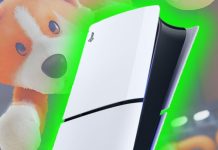









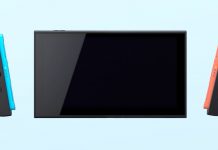
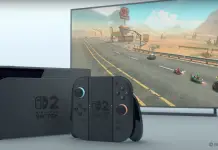
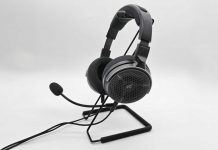

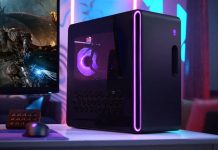
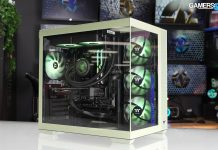
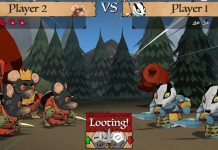

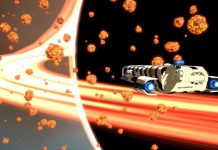




![‘Chernobylite 2: Exclusion Zone’ Kickstarter Now Live [Trailer]](https://1stgamers.com/wp-content/uploads/2025/01/chernobylite2-218x150.jpg)











